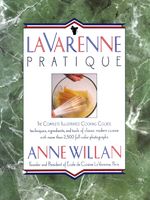Advertisement
Chestnut
By Anne Willan
Published 1989
The edible chestnut (not to be confused with the horse chestnut) is particularly sweet and starchy. Wild chestnuts (Fr. châtaigne), contain two or three smaller nuts with flat sides within their outer prickly husk, while common chestnuts (Fr. marrons) have a single large nut. To increase their sweetness, freshly gathered chestnuts are often “cured” by storing for a few days so that some of their starch is converted into sugar.
The French and Italians like to treat chestnuts as a vegetable, glazing and mixing them whole with Brussels sprouts or red cabbage, or puréeing them for a classic accompaniment to meat and in stuffings for poultry, often with sausagemeat, onion or celery. Celebrated desserts include mont blanc, a meringue topped with sweetened chestnut purée and whipped cream, and chestnuts with chocolate in a pavé. Dried chestnuts are an Italian specialty for simmering in soup, or making light cakes.


